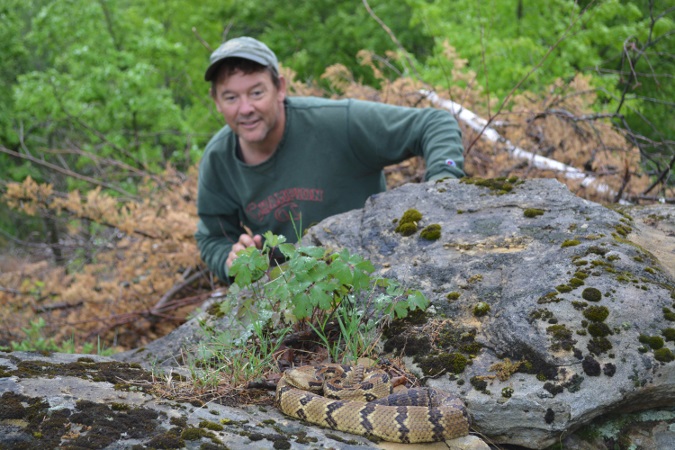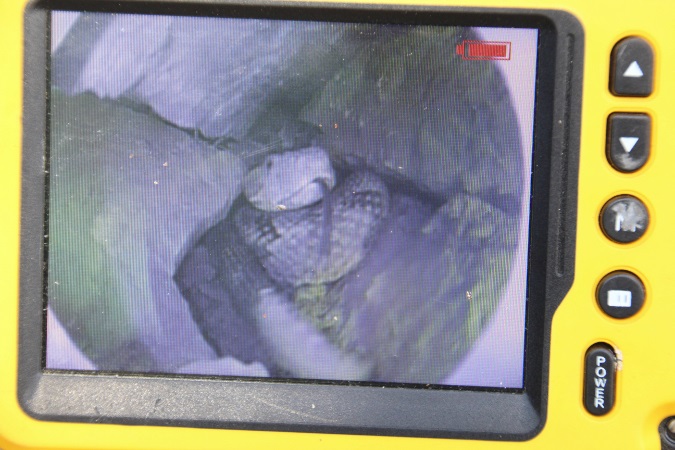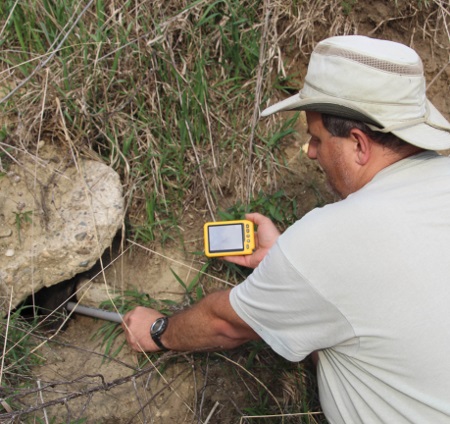Put an underwater camera in people’s hands and you never know how they’ll use it next. “The past couple years, the folks from Discovery Channel’s Bering Sea Gold have been using our Aqua-Vu HD cameras to prospect for underwater treasure,” says Ben Gibbs, president of the popular marine electronics company. “Captain Vernon Adkinson employs as many as eight of our high definition cameras at a time and says they help his team find a lot of underwater gold.”

Finding fishing hot spots or hidden treasure aside, Gibbs notes that his company’s underwater cameras have been deployed for everything from aquatic rescue operations to well and sewer inspections to chasing ghosts. “Several years ago, National Geographic tried fitting a small Humboldt squid with one of our cameras in hopes of filming a rare giant squid in the wild. Les Stroud of TV’s Survivorman even used one of our Micro cameras to try and film a Sasquatch.”
So it didn’t surprise Gibbs or anyone else at the Central Minnesota angling-electronics company when they learned about Steven Bostwick and his rather slithery adaptation of their cameras.
“In the work I do as a herpetologist, it’s important to find and track hallmark species and individual animals for migration and reproduction studies,” says Bostwick, an Iowa-based rattlesnake researcher.
“Timber rattlesnakes love to inhabit large limestone rocks and overhangs to use both as den sites and summer nesting areas. Prairie rattlesnakes use both limestone overhangs and large mammal burrows for dens and nesting. With both species, birds of prey are their main predators, so you see why these snakes retreat underground when danger approaches. It can make my life as a herpetologist difficult, in attempts to record the snakes’ movements.
“Out of necessity, I came up the idea of using a field camera on a pole,” Bostwick notes. “When a colleague showed me the Aqua-Vu Micro II underwater camera, I knew it would be perfect for this application and for quietly probing into the dens and burrows, to identify the animals for tracking data. The Micro camera has a tiny, thumb-size lens that’s both lightweight and super rugged. It plays clear, live video on a handheld 5-inch color LCD and has its own rechargeable power source, perfect for portable field use.”
To convert the classic fishing camera into Bostwick’s ideal reptile research tool, he attached the lens to the end of a 10-foot length of PVC electrical conduit. Next, he ran camera’s cable inside the tube and routed it back to the Micro II screen. “I also made sure to orient the camera and conduit so I always knew which end was up. When you go underground, it can get confusing, so orienting the view is important.
“What’s really cool,” Bostwick adds, “is that the Micro-PVC set up works really well as an underwater pole camera, for looking under boat docks and other shallow cover when you’re fishing.”
 Back among his slightly scary research subjects, Bostwick recalls typical days in the field. “It’s real common in the spring for rattlesnakes to stage at the entrance of the den, still underground, because it’s not yet warm enough to emerge. This is where the pole camera set up has been invaluable, allowing us to observe the snakes where we couldn’t previously do it.
Back among his slightly scary research subjects, Bostwick recalls typical days in the field. “It’s real common in the spring for rattlesnakes to stage at the entrance of the den, still underground, because it’s not yet warm enough to emerge. This is where the pole camera set up has been invaluable, allowing us to observe the snakes where we couldn’t previously do it.
“This past summer, I was just approaching one of my timber rattlesnake den sites at the top of a hill when I heard the quick escape rattle of a nearby snake. Before I could get a good look, the rattlesnake crawled under a big rock and disappeared. I was able to run the Aqua-Vu pole camera right beneath the rock and find the tunnel where the snake was hiding. The camera gave me a great look of the animal, which I immediately recognized, due to its marking—a little blot of color I’d placed on the snake’s tail during a previous capture.
“The Aqua-Vu has greatly aided my tracking and movement research, letting me literally enter the rattlesnakes’ world, sight unseen. The data I’ve compiled continues to tell us lots of valuable information about the reproduction, migration and population of these marvelous animals.”
